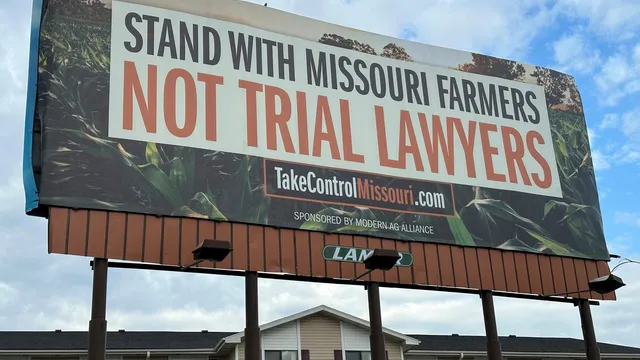
Bayer challenges thousands of cancer lawsuits over Roundup in Supreme Court
2025-04-07 21:26- Bayer filed a petition to the U.S. Supreme Court focusing on the Durnell case and federal versus state law on Roundup.
- The Supreme Court's involvement is sought due to conflicting federal circuit court decisions regarding failure-to-warn claims.
- The resolution could impact tens of thousands of Roundup cases and the agricultural industry significantly.
Express your sentiment!
Insights
On April 4, 2025, Bayer, through its subsidiary Monsanto, submitted a petition for a writ of certiorari to the U.S. Supreme Court concerning the Durnell case. This request came after the Missouri Supreme Court's recent decision opened a path for the high court's review. Bayer argues that a divide among federal circuit courts on the issue of whether federal law preempts state failure-to-warn claims necessitates U.S. Supreme Court intervention. The outcome of this case is critical, as it has implications for tens of thousands of pending Roundup cases that hinge on similar state-based claims. Bayer emphasizes that existing lawsuits represent a conflict with federal law, specifically citing the Federal Insecticide, Fungicide, and Rodenticide Act (FIFRA). Bayer claims that potential jury verdicts could impose labeling requirements that differ from those mandated by the Environmental Protection Agency (EPA). The contention arises primarily from Missouri’s claim that there should be cancer warnings on Roundup products, which contradicts the EPA’s approval and scientific evaluations. Thus, Bayer asserts that the state law requirement is preemptively overruled by federal standards, complicating the current legal landscape. As Bayer navigates through these challenges, it is also pursuing legislation in several states designed to limit lawsuits related to Roundup. Recently, Georgia passed law that would deem federally approved pesticide labels adequate for meeting state warning obligations. However, opposition remains strong, as environmental justice groups criticize such measures for hindering public safety and accountability. Similar initiatives are underway in Tennessee and North Dakota but face political hurdles, particularly among Republican lawmakers in Iowa. Bayer disputes the cancer allegations and has set aside $16 billion for settlements but warns that continued litigation pressures may jeopardize the availability of glyphosate, a key ingredient in Roundup. As a major agriculture player, Bayer insists that clarity in legal standards is essential for the agricultural industry’s operation and stability, underscoring the company's focus on innovative agricultural products. The Supreme Court's eventual ruling could redefine the legal parameters for both Roundup and future agrochemical products in the U.S.
Contexts
The history of Roundup litigation stems from the herbicide’s association with potential health risks, particularly the alleged links between its active ingredient, glyphosate, and various cancers. Roundup was introduced by Monsanto in the 1970s and quickly became a go-to herbicide thanks to its effectiveness and the introduction of genetically modified crops that were resistant to glyphosate. However, as time passed and research emerged, growing concerns about glyphosate's safety led to significant legal challenges against Monsanto. In the late 2010s, the litigation accelerated following the 2015 announcement by the World Health Organization’s International Agency for Research on Cancer, which classified glyphosate as “probably carcinogenic in humans.” This classification fueled public concern, resulting in thousands of lawsuits against Monsanto, primarily from individuals alleging that their use of Roundup caused non-Hodgkin lymphoma and other health issues. As the legal battles progressed, several high-profile cases drew international attention. Notably, in August 2018, a California jury awarded a $289 million verdict to Dewayne Johnson, a groundskeeper who claimed Roundup was a significant factor in his terminal cancer diagnosis. This landmark case set a precedent, and subsequent trials produced multimillion-dollar jury awards, even as Monsanto (now a subsidiary of Bayer) maintained that extensive studies have demonstrated glyphosate’s safety. The litigation landscape evolved further as Bayer agreed to pay $10.9 billion in 2020 to settle approximately 95,000 lawsuits, a move aimed to resolve the ongoing litigation and outside claims related to Roundup. Despite the settlements, the future of Roundup litigation remains uncertain. Legal experts indicate that ongoing research and varying state regulations might spark further lawsuits in the future. Investigations into the safety and environmental impact of glyphosate continue, and some states have taken steps to restrict or ban its use altogether. The long-term implications for farmers, consumers, and the agricultural industry are significant, particularly in light of public sentiment shifting towards safer, organic, and environmentally friendly agricultural practices. The circumstances around glyphosate reflect broader issues in agricultural chemistry and public health, raising vital questions about the regulatory processes that govern pesticide approval and safety monitoring. In summary, the history of Roundup litigation showcases the complexities of balancing agricultural innovation with public health concerns. Legal outcomes continue to evolve as new scientific research emerges and societal values shift. The broad range of lawsuits indicates a persistent distrust of not only Monsanto but larger agricultural practices that prioritize chemical intervention over holistic health approaches. As debates around glyphosate persist, the outcomes of these litigations will likely shape regulations and practices in the agrochemical sector for years to come.